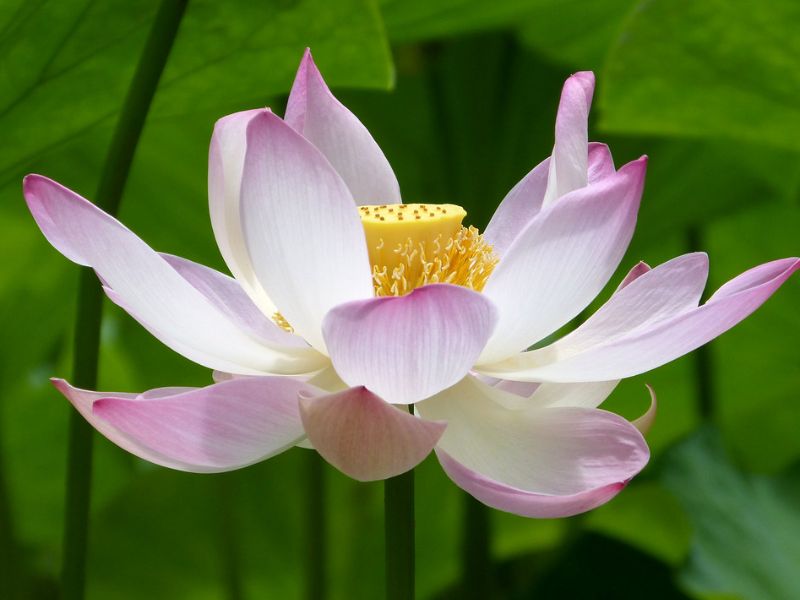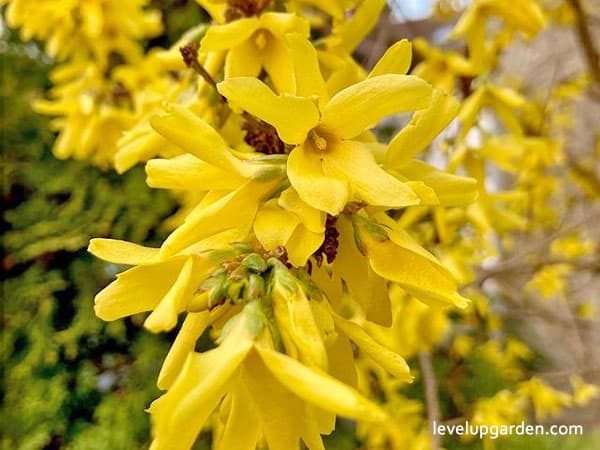Pistachio is a deciduous small tree with branching growth and a low decorated crown of five oval lobes with gray-green pinnate compound leaves. It is dioecious, with separate male and female trees. Flowering in spring, male and female flowers are brown-green with no petals. After the female flowers, the reddish soft shells overlap and contain hard-shelled pistachio nuts. At maturity, the shell splits along the long axis. When the shells come off easily, it is time to harvest.

Pistachios are wind-pollinated and both male and female trees must be planted for successful pollination and fruiting. It is long-lived (several hundred years), with maximum fruiting after about 20 years. Pistachios grow best in areas with hot summers (they do not like humidity) and cold winters. For best production, it is important to meet the required cooling time.
I. Pistachio Tree (Pistacia vera) Profile
| Common Names | Pistachio tree, pistachio nut tree, almond tree, filbert tree |
| Botanical Name | Pistacia vera |
| Native Area | Central Asia |
| Plant Type | Fruit, Trees |
| Hardiness Zones | 7 – 11 |
| Sunlight | Full Sun |
| Growth Rate | Moderate |
| Soil Type | Clay, Loam, Sand |
| Soil pH | Acid, Alkaline, Neutral |
| Soil Drainage | Moist but Well-Drained, Well-Drained |
| Mature Height | 20-30 ft. |
| Mature Width | 20 ft. |
| Bloom Time | Spring |
| Flower Color | Reddish-brown buds |
| Water Needs | Low, Average |
| Maintenance | Average |
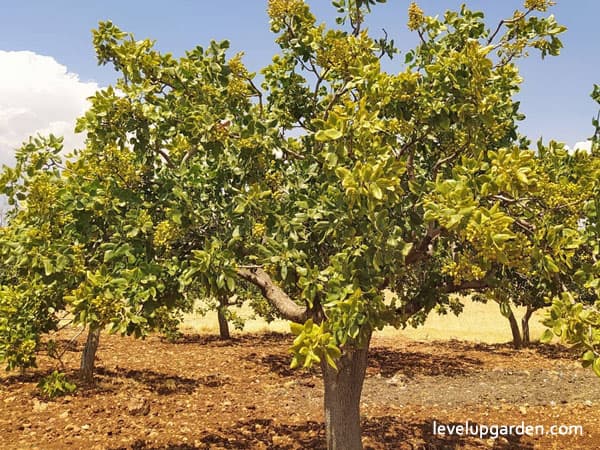
III. Characteristics
- The Pistachio tree grows up to 10 meters tall. It has deciduous pinnate compound leaves 10-20 cm long. It is dioecious, with separate male and female trees. Flowers are dioecious and bisexual and bloom in panicles.
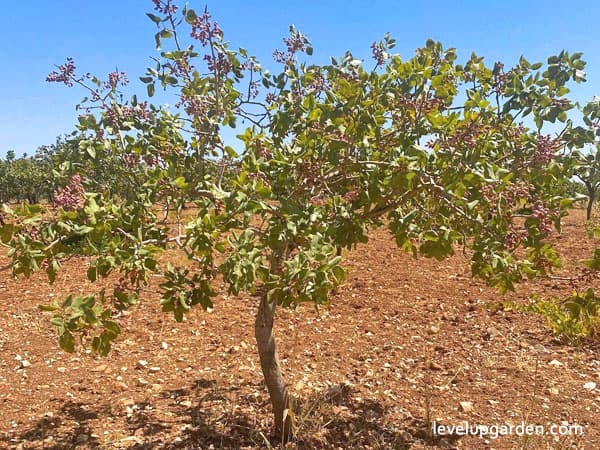
- The fruit is a kernel with elongated seeds, which are edible. The seeds are generally considered nuts, but they are edible nuts, not vegetable nuts. The outer skin of the fruit is creamy and hard. The seeds have a light purple skin and light green flesh with a distinctive flavor. When the fruit ripens, the husk changes from green to an autumnal yellow or red color, and parts of it suddenly break off. This is called “shedding,” and a “popping” sound is heard. This splitting is a trait selected by human hands. Commercial varieties vary in the stability of the splitting process.
- Pistachio trees harvest an average of about 50 kilograms (110 pounds), or about 50,000 seeds, every two years.
III. Growing Conditions for Pistachio Trees
- Light: Pistachios need lots of sunlight, but they also need water. In an arid climate, they thrive.
- Soil: Pistachios are very hardy plants that do well in many different types of soil. They need lots of water during the growing season but will tolerate drought better than most other fruits.
- Water: Pistachios are nuts grown by plants. They grow in dry environments. Watering them is important. They need lots of water to make a lot of nuts.
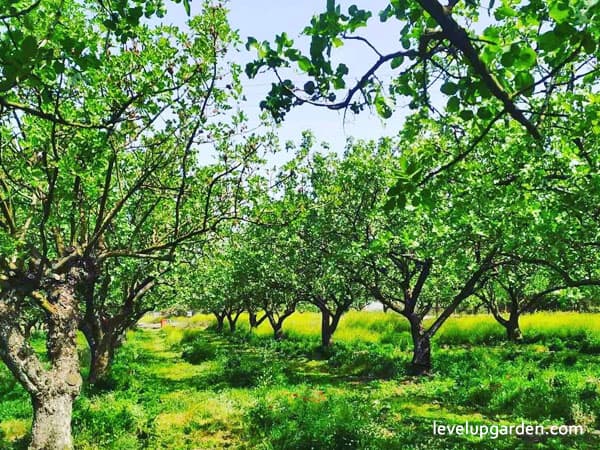
- Temperature and Humidity: Pistachios love heat, but they need cold temperatures for survival. They also don’t like too much water. These trees grow in dry climates.
- Fertilizer: Before adding fertilizer, it is important to do a soil test to know what your soil is lacking. If your soil is deficient in nitrogen, phosphorus, or potassium, adjust the fertilizer according to the nutrients your trees need. Fertilizing in late winter or early spring will give you a good harvest.
- Pests and Diseases: Pest and disease-free pistachios! You should never see any pest or disease problems on your tree. You’ll know if there are pests because they will cause damage to the fruit.
IV. Uses
Pistachios can be enjoyed in many ways. They add a beautiful green or purple color to snacks, salad ingredients, pizza toppings, and in baking, they add a beautiful green or purple color to a variety of desserts and dishes. Delicious green-colored desserts include pistachio gelato and cheesecake.

The seed kernels can be eaten raw or roasted and are often used in a variety of desserts, including baklava, halva, and ice cream. They are also used as a yellow-green coloring for confections. The seeds are rich in protein, fat, fiber, and vitamin B6.
V. Why should you buy a Pistachio tree (Pistacia vera)?
Pistachios have always ranked as a favorite nut. With their unique, rich flavor and natural sweetness, pistachios have always been a beloved snack. Easy and enjoyable to eat, your family will rejoice in the harvest of the pistachio tree.

Pistachios are also healthy. Did you know that pistachios are the lowest in calories of all nuts? They are an ideal snack because they are rich in healthy fats, fiber, vitamins, antioxidants, phytosterols, and carotenoids, all of which are essential for maintaining good health. We tend to snack on what we can get our hands on, but keeping pistachios on hand can be a healthy choice as well as a fun one for you and your family.
Pistachio trees grow in places where few other plants grow. Pistachios are very sensitive to climate, but they are the perfect plant for desert dwellers where lush shade is scarce. It prefers direct sunlight, little shade, and dry heat rather than humidity.
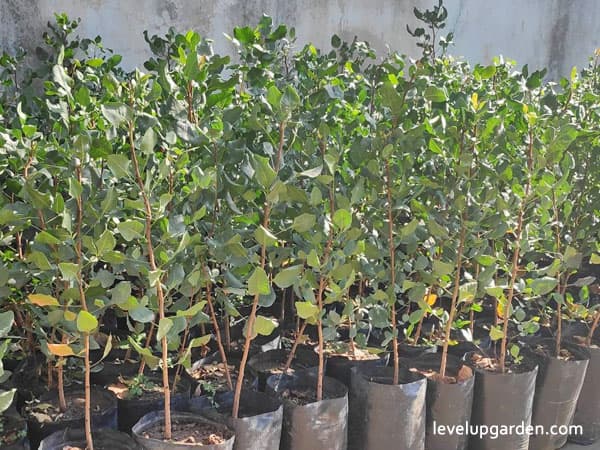
Plant and grow. If the climate is suitable and there are males and females, pistachio trees will produce a large crop every other year. And the tree, which prefers dry climates, requires little maintenance or upkeep. Most trees yield about 15 kg of nuts per year. This is enough to share with friends and family.
Pistachio nuts are easily harvested. When the pistachios start to crack, simply lay out a tarp, shake the branches, and watch the delicious pistachios fall to the ground. Just place them in the sun for a few days and you will have fresh pistachios to eat.
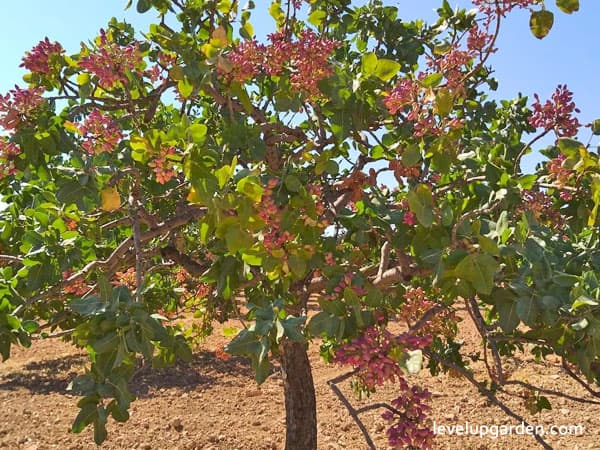
They will stay fresh for several months. If you can’t eat all of your freshly harvested pistachios, don’t worry. They will stay fresh for several months if you put them in a sealed jar or bag. Store them in the refrigerator or freezer if you need to keep them even longer.
VI. FAQs
Where do pistachio trees grow in the US?
California, Arizona, and New Mexico account for 100% of commercial pistachio production.
Can you eat pistachio straight from the tree?
When unprocessed, the fresh pistachio nuts inside are sweet and juicy. They can be used in their raw form without processing. They can also be pureed into a paste and used in flavorful dishes, or the puree can be used in desserts such as ice cream or custard.
How many years does a pistachio tree produce?
Growing pistachios takes time and patience. The first pistachios can be seen only after about the fifth year. It is said that it takes 7-8 years and 15-20 years to reach the peak of harvest.
